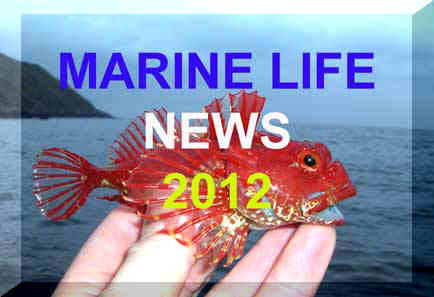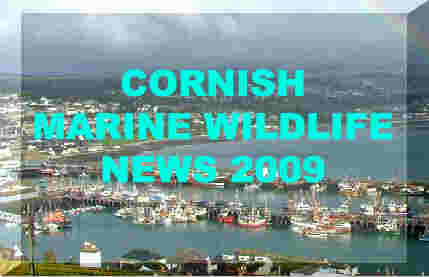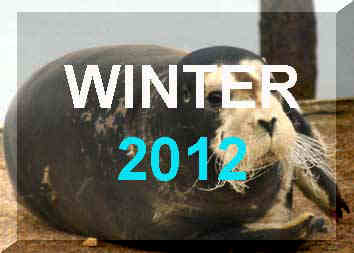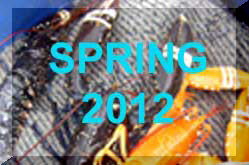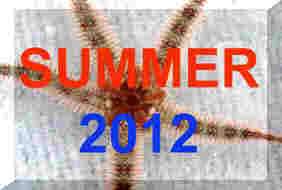LATEST
NEWS:
December
2012

Gaping
File Shell from Loch
Sunart
Photograph
by Darryl Mayer (Dive
Tramp)
Darry
Mayer Photograph Gallery
Fife
Powerboat
Training Centre
A massive
colony of the Gaping File Shell,
Limaria
hians, has been discovered in Loch
Alsh, a sea inlet between the Isle
of Skye and the western Scottish mainland. The reef habitat covers
an astonishing 4.6 sq. miles (7.5 sq. km) and was discovered during
a survey commissioned by Marine
Scotland. It is the largest known colony
of Gaping File Shells
in seas around the British Isles and possibly the world. Numbers
of the bivalve mollusc
exceed 100 million and they create their own specialised
habitat with unique fauna.
A
bed of Horse Mussels (or Clabachdubh),
Modiolus
modiolus, at Noss
Head off the north-eastern tip of Scotland covers an area of 4 sq.
km.
BMLSS
Mollusca
30
December 2012
A
Minke
Whale, Balaenoptera acutorostrata, was seen
swimming with Bottle-nosed Dolphins, Tursiops truncatus,
in
the Irish Sea and
observed from the Isle
of Man shore with binoculars by Becca
Crow and Sarah Kaye. This
association is known to occur but is seldom observed. It is debatable whether
it could be considered temporary mutualism
or an opportunistic encounter? Herring was
believed to be the prey and the question is
whether the two species of cetacean
were actively co-operating?
"It
is also possible the dolphins
were taking advantage of the commotion the Minke
Whale would have been creating and were in
fact stealing the fish." (Dr
Peter Evans). The Bottle-nosed
Dolphins normally visit Manx
waters between October and March
to feed on herring, mackerel and whiting.
BMLSS
Cetacea
14
December 2012
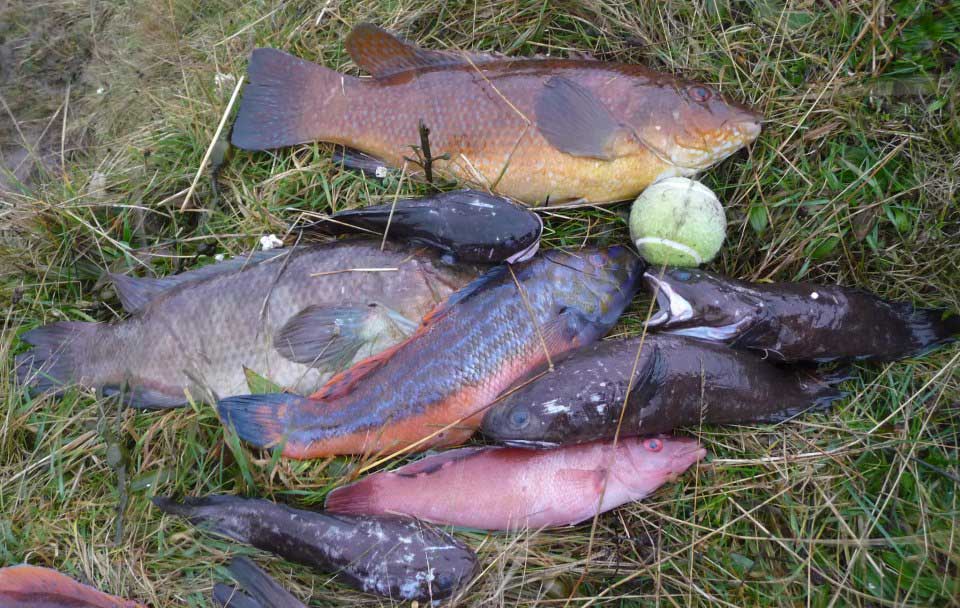
The
south-east storm threw up at least six species of fish into the boat noust
at Frustigarth
on the east side of Shapinsay
in the Orkney Islands.
There were at least 30 fish of various sizes. Species identified were Tadpole
Fish, Ling,
young Cod, Saithe, and both Cuckoo
and Ballan Wrasse.
Similar wrecks occurred on other coasts.
Photographs
and comments by Paul
Hollindrake on Snorkel
Orkney
All
wrasse have thick protruding lips, and there are strong teeth, both in
the jaws (for biting and rasping) and on the pharyngeal
bones in the throat (for gripping and crushing). With these teeth they
are able to enjoy a mixed menu of shelled animals including barnacles,
other crustaceans, and molluscs.
BMLSS
Wrasse (by Dr Amanda Young)
11
December 2012
Hundreds
of Humpback Whales,
Megaptera
novaengliae, gathered to feed off
Tromsø,
Arctic Norway, for the third year in succession.
"Humpback
Whales hunt by encircling a group of fish
then diving underwater. You have no clue where the whales are before you
see hundreds of scared Herrings
jumping out of the water, followed by Humpbacks
with wide open mouths." (Espen
Bergersen)
Northern
Blogosphere
28
November 2012
Five
Humpback Whales,
Megaptera
novaengliae, were spotted bubble-net
feeding for small fishes in seas off southern Ireland near Baltimore,
County
Cork. The Irish
Whale & Dolphin Group (IWDG) recognised
most of the individual whales from previous visits in 2001
and 2008.
Full
IWDG Report
November
2012
An
incredibly rare all white Humpback Whale,
Megaptera
novaengliae, spotted by engineer Dan
Fisher off the coast of Norway on a boat trip
to Svalbard in the
Arctic north. He climbed the mast to take some photographs of the white
whale amongst a pod of the normal grey whales. This
rare event has only ever been seen in one adult Humpback
Whale before.
BMLSS
Cetacea
30
October 2012
A
silvery sea bream (Sparidae)
called
a Bogue,
Boops
boops, was caught off Penlee
Point,
south Cornwall (near Plymouth).
This
warm water fish is rarely seen in British seas reaching its most northerly
point of distribution in the English Channel where this schooling fish
appears as a vagrant.
27
October 2012

Shale Cliffs at Rope Head
Lake, Purbeck
with the baleen whale
(inset)
Photograph
by Dom Greves
A
large
baleen
whale was spotted by Ilay
Cooper, (author of Purbeck
Revealed), at Rope
Lake Head,
Purbeck,
Dorset, beneath the vertical shale
cliffs. He discovered the 13.6 metre (44.6 ft) long carcass whilst walking
along the shore at low tide. Its inaccessible location
and the position of its head and blowhole made it difficult to identify.
Dorset
Wildlife Trustís marine conservation officer, Emma
Rance, believed it could be a juvenile
Fin
Whale, Balaenoptera
physalus, which would be a first discovered
on a Dorset shore.
More
Images by Steve Trewhella (Link)
BMLSS
Cetacea
20
October 2012
An
albino
Nursehound, Scyliorhinus
stellaris, was
caught by angler Tojo
from a boat out of Holyhead,
Anglesey.
The unusual white shark was returned to the sea.
IMAGE
BMLSS
Shark News

British
Marine Life News 2011
Cornish
Marine Life Records 2009
BMLSS
Oil Disasters page



